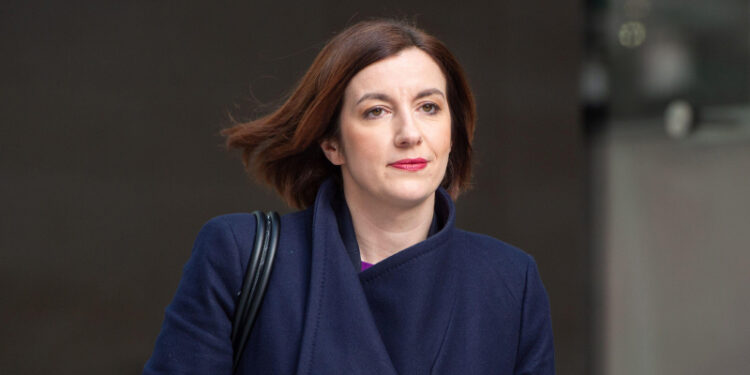In the Spectator today, I’ve written a blog post about another act of vandalism by Bridget Phillipson, the Education Secretary. This time, she’s got the free schools programme in her sights.
By any measure, the free schools programme has been a resounding success. If you judge schools by how much progress their pupils make between the ages of 11 and 16, free schools occupy the top five positions in the most recent league table and eight of the top ten. That’s pretty remarkable when you consider free schools comprise less than 3 per cent of schools in England and Wales.
A free school – King’s Maths School – was the top performing sixth form in the country for the ninth year in a row in 2024 and in 2022 was designated ‘best sixth form college of the decade’ by the Sunday Times.
Another one – Harris Westminster Academy – got 49 Oxbridge offers this year, one more than Eton.
The first free school I helped set up – the West London Free School – hasn’t fared quite as well, but it has done okay. It’s in the top 2 per cent of non-selective state schools in England when it comes to GCSE results and the sixth best state school in London in terms of A-level results.
All told, the free school programme has delivered over 650 schools, providing hundreds of thousands of new places, and it’s done so more quickly and cheaply than Labour’s Building Schools for the Future programme.
Yet Bridget Phillipson, the Education Secretary, has announced that the free schools approved by the last government which haven’t yet opened are being ‘reviewed’, with the future of the 44 mainstream schools in the pipeline in doubt.
A source close to Phillipson told the Times that free schools were a “Tory vanity project”.
“State schools have been left crumbling for too long, while the Tories’ ideological drive saw capital budgets funnelled into building new free schools with surplus places,” a Labour insider told the paper.
In fact, of the 650 plus free schools that have opened since 2011, a majority are in areas where there’s a need for additional school places. Yes, some have created surplus places, but you need surplus places if parents are to have a choice. Increased choice means more competition and competition drives up results.
In maths, England rose from 17th place in the OECD’s international league table in 2018 to 11th in 2022, whereas Scotland, significantly above England in 2010, fell below the OECD average. Scotland, unlike England, doesn’t have any free schools.
So why is Phillipson targeting the most successful education policy of the last 14 years? I can think of two reasons.
You can continue reading here.











To join in with the discussion please make a donation to The Daily Sceptic.
Profanity and abuse will be removed and may lead to a permanent ban.
If only the Tories had thought to axe some of Labour’s legislation in their 14 years of power!
True – there must have been one or two the Blue Labour socialists didn’t like. Can but hope electing Olukemi Badenoch as leader will finish them off and swell the ranks of Reform MPs.
All of it – since 1945.
It is a more complex issue. Nationalist tendencies were told in the late 1990s to move away from anti-black or anti-immigrant postures to anti-Islam forsaking all other hatreds. It is a mistake to think that this situation started after 911. It is an agenda. All you have to do is read about it and you will understand. If you just go around being led by the nose with whatever is emotionally appealing then you are likely to miss the point.All of thjose terrorists that you hate – Daesh, Islamic State, AL Qaeda. You don’t have to be particularly perspicacious to see that these are western forces. You can look at the influence of the British on the Muslim BNotherhood over the last hundred years. It is very well documented.
“So why is Phillipson targeting the most successful education policy of the last 14 years?”
Simple, and very much linked to the national destruction that the Labour Party, doubtless under orders, is intent on wreaking on this country. Free schools appear to have been a success story and as measured in OECD terms they definitely have been. This is not permitted.
The UK is well on the way to becoming a third world shit hole and further free schools might hold back such progress hence Phillipson’s intention to get rid of the Free Schools program.
Success in the United Kingdom will not be tolerated.
Socialists don’t do “free”
In her sights, not sites!
Moderator here. Well spotted, thanks, and corrected. Mr Young will stay on after school and write out 100 lines
Lol
Was it his AI bot substitute?
Or does he dictate his articles to Siri
The only things I see her citing are Das Kapital and The Communist Manifesto.
If it’s successful, the Leftwaffe wants to get rid of it, they really don’t like people who are able to do things without having the power of the state behind them.
I keep reading the word ‘why?’ In DS headlines.
Let’s be clear shall we?
This Labour administration is deliberately, wilfully intent on the systematic destruction of our Judeo-Christian culture.
It plans to steal your money, your freedoms and impose, through criminalisation if required, its Marxist ideology on Britain.
There’s no secret about this and they’re quite open about it.
The only question (rather than ‘why’) we must ask is what practical action we (who vastly outnumber them) intend to take to counter them.
Got it now?
Why? Because it’s successful, Labour gets ni credit and it’s not an approved Socialist policy.
For the Socialist it’s all about process not outcome. Better have the “correct” process than a good outcome with the “incorrect” process.